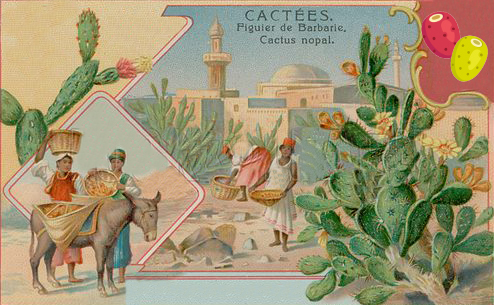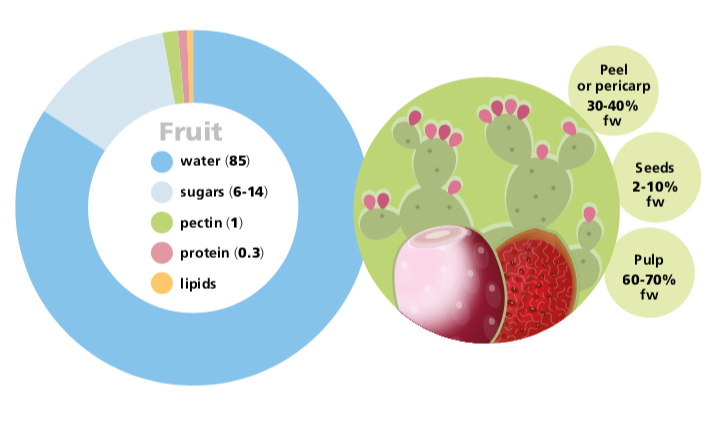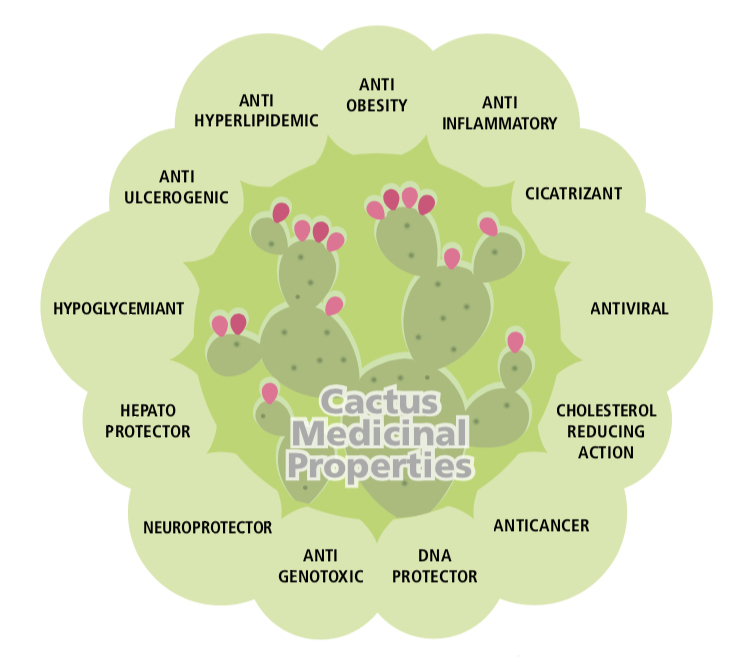

Cactus plants were used by ancient civilizations to cure diseases and heal wounds for thousands of years. The origins and history of cactus as medicine are, therefore, closely linked to the ancient Mesoamerican civilizations. For over 12000 years, fresh cactus has been consumed by the natives for its nutritional qualities and healing properties. Cactus cladodes, fruits, seeds and flowers have been used as folk medicines in several countries for centuries.


Cactus pear is a non-climacteric fruit, it has a low respiration rate (Cantwell, 1995) and low ethylene production. Hence, the nutrient concentrations remain in the fruit without significant changes throughout storage; however, weight and firmness may change.
Furthermore, the fruit’s pH, acidity and total soluble solids do not vary during post-harvest storage.
The chemical and nutritional composition of cactus pears has been extensively studied; Sugars, fibre, mucilage and pectins are the major fruit constituents; proteins, amino acids, vitamins and minerals are the minor components.
There are numerous reports indicating that a diet rich in fruit and vegetables is linked to lower incidence of coronary heart disease and some types of cancer; this suggests that this kind of diet has positive effects on health (Bazzano et al., 2002). These beneficial effects are associated, not only with the nutrient and vitamin content of foods, but with the action of certain bioactive components. Phytochemicals with antioxidant properties promote good health by protecting against the oxidative damage induced by reactive oxygen species (Prakash and Gupta, 2009).
Several studies demonstrate that both cactus fruits and cladodes have high levels of important nutrients, minerals and vitamins, as well as antioxidants. The cactus plant appears to be an excellent source of phytochemicals of nutraceutical importance (El Mostafa et al., 2014). The cactus plant can be fully exploited since its bioactive components can be extracted from its various parts: flowers, fruit, cladodes, roots and seeds (Nazareno, 2014). The figure below summarizes the most relevant medicinal properties ascribed to cactus products.

SOURCE: CROP ECOLOGY, CULTIVATION AND USES OF CACTUS PEAR
the Food and Agriculture Organization of the United Nations and the International Center for Agricultural Research in the Dry Areas